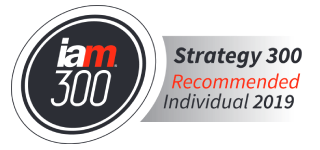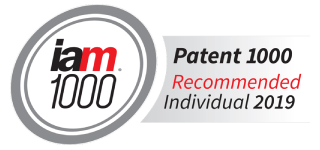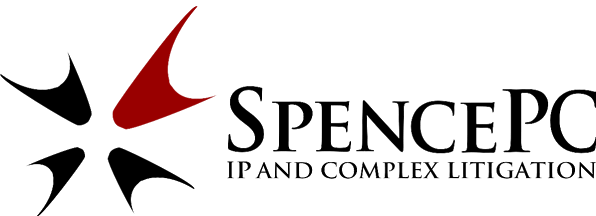Services
Practice Areas
Why SpencePC?
Clients choose SpencePC because we do outstanding work for fair compensation. Unlike our competitors, we encourage the use of alternative-fee agreements that more closely align our clients’ interests with the Firm’s interests. As a result, our clients pay only for the value they receive.
Our Philosophy
Our philosophy is simple: be outstanding and offer a unique value proposition. Hourly billing creates the wrong incentive for attorneys to work longer, not smarter. Instead, we encourage alternative-fee arrangements that reward success and efficiency. By doing so, our attorneys remain focused on obtaining the best results for our clients in the most cost-efficient manner.
Our Skills
We are attorneys who specialize in intellectual property and complex litigation. We hold science, engineering, and law degrees from the nation’s top schools. Following our education, each of us received years of additional training from prestigious, top-tier law firms. Our billing model ensures we remain focused on obtaining the best results in the most cost-efficient manner.
Associations & Accolades
PITFALLS OF PATENT LICENSING
How to Ensure Patent Enforcement Without Joining the Patent Holder
By AJ Wenn, Jason Wejnert and Daniel Hess
Sophisticated investors recognize the benefits of patent licenses and many prefer exclusive licenses over the cost, hassle, and uncertainty of patent litigation. Investors should recognize that exclusive licenses may not always prevent the patent holder from being joined in a lawsuit. This can cause problems for both the licensee and the original patent owner. For example, when patents are licensed from one organization to another, the licensee may lack standing to sue without joining the original patentee. An exclusive patent license typically grants the licensee the sole right to practice an invention. It does not, however, automatically provide the licensee with the ability to enforce its rights should others infringe on its exclusivity.
In order for a licensee to have standing in court, without joining the patentee, the contractual agreement must transfer “all substantial rights” of the patents. Courts typically weigh a variety of factors to determine if an assignee or licensee has received “all substantial rights” of a patent. The case of Clouding IP, LLC v. Google Inc. 1 , discloses a comprehensive list of factors that influence a court’s decision, including:
(i) “ transfer of the exclusive right to make, use, and sell
products or services under the patent;”
(ii) “the scope of the licensee’s right to sublicense
;”
(iii) “the nature of license provisions regarding the reversion of rights to the licensor
following breaches of the license agreement;”
(iv) “the right of the licensor to receive a portion of the recovery
in infringement suits brought by the licensee;”
(v) “the duration of the license rights
granted to the licensee;”
(vi) “the ability of the licensor to supervise and control
the licensee’s activities;”
(vii) “the obligation of the licensor to continue paying patent maintenance fees
;” and
(viii) “the nature of any limits on the licensee’s right to assign
its interests in the patent.”
Of the above listed factors, the following are often given the most importance: (1) the right to bring a suit independent of the patentee; (2) the right to make, use, and sell products or services; (3) the right to sublicense the patents without approval; and (4) the right to assign the patents without approval. Each of these factors are described below in greater detail.
1) Right to bring suit independent of the patentee:
Frequently, the nature and scope of the licensor’s retained right to sue accused infringers is the most important factor in determining whether an exclusive license transfers substantial rights of the patent. Courts have often held that where the licensor retains a right to sue accused infringers, that right often precludes a finding that all substantial rights were transferred to the licensee 2
.
2)Exclusive right to make, use, and sell products:
Transfer of the exclusive right to make, use, and sell products or services covered by the patent is considered vitally important to an assignment or license. This principle was further supported in Abbott Lab. v. Diamedix Corp.
3
, where the Federal Circuit concluded that the licensor had not transferred “all substantial rights” to Abbott when the licensor retained “a limited right to make, use, and sell products” embodying the patented inventions 4
.
3) Right to sublicense the patents without approval:
A licensee’s right to sub-license the patents is an important consideration in evaluating whether a license agreement transfers all substantial rights. For example, in Delano Farms Co. v. California Table Grape Comm’n
5
, the court determined that a licensing agreement, which restrains or controls the licensee’s sublicensing power, was regarded as having retained substantial control over patent enforcement. Consequently, the Federal Circuit held the agreement did not transfer all substantial rights in the patent to the licensee.
4) Right to assign patents without approval:
The right to assign patents without approval or direction from the assignor is important in the court’s determination of an assignee’s ability to independently litigate the patents. The importance of this factor is also supported by the case Abbott Lab. v. Diamedix Corp.
6
, where the assignor retained the “right to prevent Abbott from assigning its rights under the license to any party other than a successor in business.” The court then determined the assignor was the true patent holder because Abbott lacked the ability to assign the patent rights without encumbrance.
Accordingly, if the IP license agreement transfers (1) the sole right to bring a suit independent of the patentee; (2) the exclusive right to make, use, and sell products or services; (3) the right to sublicense the patents without approval of the patentee; and (4) the right to assign the patents without approval of the patentee, a court will likely determine all substantial rights in the patent have been transferred and licensee may bring suit without joining the patentee.
If you have any questions about drafting a licensing agreement, please feel free to contact SpencePC. Our attorneys have experience successfully drafting IP transfer agreements that withstand litigation. We are also happy to discuss any IP issues you may face, including patent litigation, patent applications and prosecution, trademark applications and prosecution, copyright filings, trade secrets, or other complex litigation matters.
1
61 F. Supp. 3d 421, 433, (D. Del. 2014).
2
See Alfred E. Mann Found. for Sci. Research v. Cochlear Corp.
, 604 F.3d 1354, 1361, (Fed. Cir. 2010).
3
47 F.3d 1128 (Fed. Cir. 1995).
4
Id. at 1132.
5
655 F.3d 1337, 1342 (Fed. Cir. 2011).
6
Abbot Lab
, 47 F.3d at 1132.
The post PITFALLS OF PATENT LICENSING appeared first on SpencePC.











